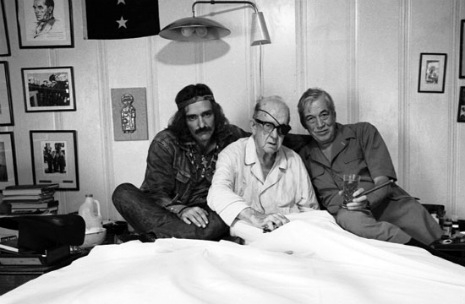
An incredible photograph of Dennis Hopper and John Ford and John Huston. Three-in-a-bed, and three legendary mavericks of cinema.
Via If Charlie Parker Was a Gunslinger

An incredible photograph of Dennis Hopper and John Ford and John Huston. Three-in-a-bed, and three legendary mavericks of cinema.
Via If Charlie Parker Was a Gunslinger
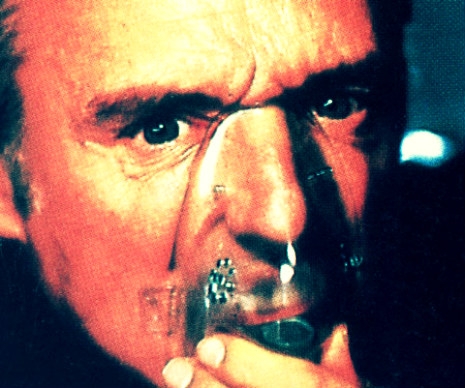
Dennis Hopper does Frank Booth on “What’s That Smell?,” Saturday Night Live, May 1987.
Thanks to Mike Webber for helping me locate this very hard to find clip.
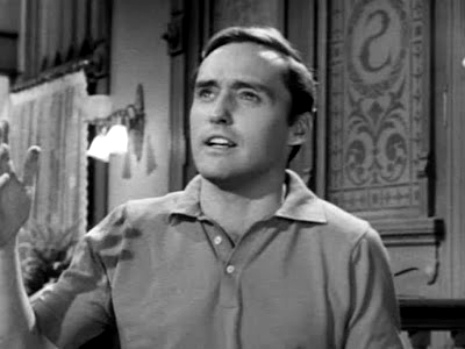
New York bard Alan Landman (Dennis Hopper) arrives in Hooterville and knocks Bobbie Jo off her feet with his beatnik vibes and poetic reveries.
“What kind of poetry do you write?”
“My poetry is, um, a cry of anguish in the
tortured night.”
“Bobbie Jo And The Beatnik” - Petticoat Junction. January, 1964.
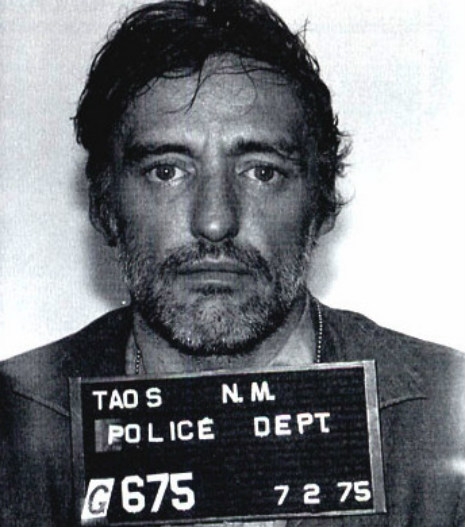
Dennis Hopper’s DUI mugshot.
Happy birthday Dennis Hopper. You were one of the great mad geniuses of American pop culture.
During the Sixties Taos was a rural hippie Mecca. Communes like New Buffalo, Reality Construction Company and The Hog Farm popped up around this Northern New Mexican town like ‘shrooms in a field of cow pies. In 1969 I spent a few weeks at the Lama Foundation, a commune 20 miles outside Taos, where I lived in a small A-frame and spent most my time reading books and staring off into the endless New Mexico sky. This quiet mountain area was propelled into the national consciousness when Dennis Hopper shot footage in the vicinity of Taos for Easy Rider. It kind of changed things forever. Taos went from being a low key destination to a center for hippie tourism. The locals hated it.
I moved back to Taos in 2002 and lived there for seven years. The legacy of Dennis Hopper and Easy Rider still color the town and what was once seen as an intrusion by a bunch of Hollywood hipsters has now become an honorable part of the town’s history.
Hopper ended up living in Taos for a short time. He bought the historic Mabel Dodge Lujan house and the El Cortez movie theater in 1970. Throughout his life, Hopper would return to Taos. He was made honorary Mayor of the town and is buried in Jesus Nazareno Cemetery, Ranchos de Taos.
It was in Taos that Hopper struggled with his follow-up film to Easy Rider, the misunderstood, flawed, masterpiece The Last Movie. Hopper practically lost his mind (some say he did lose it) while trying to edit the film into a commercially viable product. He spent a year doing so and the end result was both a critical and commercial disaster.
I saw The Last Movie when it was released in 1971. I found it an amazing head film that rivaled Alejandro Jodorowsky’s El Topo for sheer mind-blowing brilliance. But my first viewing was enhanced by some Nepalese finger hash and subsequent small screen viewings of the movie haven’t been quite as psychedelically satisfying.
While Hopper was madly trying to edit The Last Movie, he called upon the help of Jodorowsky and the Chilean brujo went to Taos to offer his insight.
In a 2008 interview with Damien Love, Jodorowsky discussed the Taos experience:
I had showed El Topo privately around the studios, I showed it to Metro Golden Mayer, Universal. And, all the time, the people at the screenings were enthusiastic, but then, when the salesmen came along, they would say, “We don’t know to sell this picture.” And Dennis Hopper was at one of these private shows, and he liked El Topo a lot. And so he invited me to come to Taos. And in Taos, he had four or six editing machines and twelve editors working. At that time, he didn’t know what to with The Last Movie. And I saw the material, I thought it was a fantastic story. And I said, “I can help.” I was there for two days, and in two days I edited the picture. I think I made it very good. I liked it. But when he went to show it to Hollywood, they didn’t want it, because by then he was in conflict with them. Later, I think that Dennis Hopper decided that he couldn’t use my edit, because he needed to do it himself. And so he destroyed what I did, and I don’t know what he did with it later. I never told that to anybody through the years, but I am sure that if, one day, they found my edit, it was fantastic. Because the material was fantastic. I took out everything that was too much like a love story or too much Marxist politics. For me it was one of the greatest pictures I have ever seen. It was so beautiful, so different. I don’t know what it is like now, how it has been edited, the final thing, I don’t know if he conserved anything of mine. But it was a fantastic film. One thing I do remember from back then, though, was how strong the smell of Dennis Hopper’s underarm perspiration was. It was so strong, and one day — he had I think ten women there — and I put everyone in a line in order for them to smell the perfume of Dennis Hopper. Because he never changed his shirt, for days upon days. He smelled very strong. That I remember.
My good friend Bill Whaley, who has been a seminal part of Taos’s art culture since the 1960’s, wrote about his encounters with Hopper around this time in local paper The Horsefly, of which Whaley was the publisher. Here’s Bill’s account of first seeing The Last Movie at a private screening in Taos and a rumination on what Hopper was going through while editing the movie.
If I’m not mistaken, El Topo was first shown at El Cortez Theatre in Rachos de Taos, Dec. 13, 1970. At the time, I managed the theater for Dennis Hopper. Then he was still editing The Last Movie at the Mabel Dodge House. The latter was about four to six hours in length. David or Dennis or perhaps Diana Schwab, David’s secretary phoned me and asked me to arrange for a special screening of a film on Sunday afternoon, which turned out to be El Topo. After watching El Topo, which blew everyone’s mind, we watched the rough version of The Last Movie. That evening, we showed the regularly scheduled feature: Fellini’s Satyricon. My mind was deluged by too many images. I never recovered. Due to its complex themes and brilliant cinematography, I remember thinking that Dennis might turn out to be the next American Fellini if he could edit The Last Movie with some sense of its mimetic qualities. That promise remained unrealized.
In Taos, the real Dennis Hopper appeared to get all mixed up with the artistic conceit or character represented up there on the screen of The Last Movie. Whether due to the demons or stimulants that dominated his psyche, he had committed himself to a course of action that ultimately undermined his project. As Dennis edited The Last Movie he appeared to call on the same techniques of personal emotion that a method actor uses as inspiration, but this time employed to cut the film. Somewhere in the cross over between film and life, Dennis appeared to lose access to the rational faculties and objective reality that are also a necessary part of life and the artistic process–at least in terms of the conventions of story telling and a semblance of acceptable behavior.”
Hopper stories in Taos are legend. He could be a loud-mouthed, gun-toting drunk - he showed up hammered at a city council meeting toting a shotgun - who tried to fuck every flower child that moved (foreshadowing Frank Booth). He could also be a gentle, stoned philosopher who appreciated the deep spiritual aura radiating from the magnificent Sangre de Cristo mountain range that towered over Taos like great stone gods. He hung out with artists and hippies and did his damnedest to support the local culture. But in a small town where locals have trouble accepting outsiders, Hopper may have been too much of shit stirrer, too big of a presence and too batshit crazy, even for the open-air madhouse that is Taos.
Locals claim that Taos Mountain will steal a piece of your soul so that you must stay in order to feel whole or the mountain will ultimately reject you, sending you on your way. With Hopper, the mountain did a little of both. Ultimately, it accepted him…or else one day he’s gonna crawl out of his grave and come raging into town with shotgun barrel blazing.
In L.M. (Kit) Carson’s 1971 documentary The American Dreamer we follow Hopper as he struggles with the film making process, hot tubs with groupies, rambles, pontificates, mindfucks, and gradually goes gloriously mad while wrestling with celluloid and the visions in his ever-expanding brain.
For more of Bill Whaley’s tales of Dennis Hopper in Taos, visit The Horsefly archives.
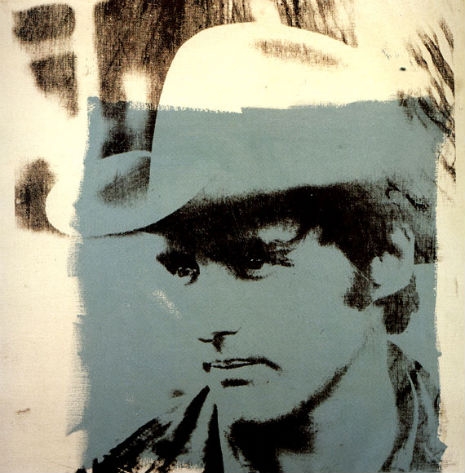
Dennis Hopper was thirteen when he first sniffed gasoline and watched the clouds turn into clowns and goblins. There was little else to do in Dodge City, where he had been born and raised. Catch lightning bugs, fly his kite, burn newspapers, swim. Hopper was, by his own words, “desperate.” A sensitive child without the stimulation to keep his fevered imagination in check.
Hopper went to movies and watched Abbott and Costello and Errol Flynn. He got home and got high on gasoline fumes and became Abbott and Costello meets Errol Flynn, and wrecked his grandfather’s truck with a baseball bat. It was a hint of what was to come.
Signed to Warner Bros at eighteen, Hopper identified with Montgomery Clift, Marlon Brando, and James Dean, but found he was expected to conform to the studio’s whims. He was too full of himself, too high on being Brando, Dean and Clift to conform—“I’m a fucking genius, man,” he told anyone who listened. His fuck you attitude saw him picked on and bullied and by old time studio director Henry Hathaway, who had him black-balled from Hollywood.
Over the next few years, Hopper did little work. He picked-up a camera and channeled his talent iby documenting the social and cultural changes happening across America during the 1950s and 1960s. He became a “gallery bum”. Where others went to the beach, Hopper hung around art galleries looking for inspiration.
He met and became friends with the young artists whose works were exhibited—Andy Warhol, Robert Rauschenberg and Ed Ruscha—and he started to collect—but it wasn’t about the money.
“My idea of collecting is not going and buying bankable names, but buying people that I believe are really contributing something to my artistic life.”
This short film takes us inside the late actor’s home-studio, where he gives a quick tour around his collection of Modern Art works, from Julian Schnabel, Jean Michel Basquiat, Keith Haring, and Ed Ruscha.
Produced and directed by Kimberly M. Wang.

Two short clips from Irwin Allen’s The Story of Mankind (1957), a bizarre movie loosely based on the non-fiction book by Hendrik Willem van Loon.
The film tells of the trial of mankind by a council elders form outer space, who must decide whether humankind should be allowed to continue or be vaporized. For the defense, the dapper Ronald Colman as The Spirit of Man. For the prosecution, the camp Vincent Price as The Devil. The pair deliberate on the evidence, which is taken from key moments in human history, from Julius Ceaser to Christopher Columbus, Elizabeth I to Napoleon. You get the picture.
The cast was a Hollywood producer’s wet dream, which included Virginia Mayo as Cleopatra, Peter Lorre as Nero, Hedy Lamarr as Joan of Arc, Agnes Moorehead as Queen Elizabeth I, Harpo Marx as Isaac Newton and even Groucho Marx.
In the first clip, two very different acting styles come together, as Dennis Hopper presents his Method Napoleon, against Marie Windsor’s Hollywood Josephine. The two styles don’t quite gel, but Hopper’s speech about a “United States of Europe” is highly topical, considering French President Sarkozy and German Chancellor Angela Merkel’s current ambitions.
The second clip has Harpo Marx as Isaac Newton discovering gravity and sliced apples with his harp.
With thanks to Richard Metzger

At the height of his drug-fueled insanity, Dennis Hopper recites Rudyard Kipling’s “If” on The Johnny Cash Show, September 30, 1970. Can you imagine seeing such a thing on prime-time television today?
This can’t have been easy for him to do in the state of mind he was in back then!
Thank you, Leroy Chapman!

A selection of artworks by artists better known for their work as actors, musicians and writers.
William Burroughs
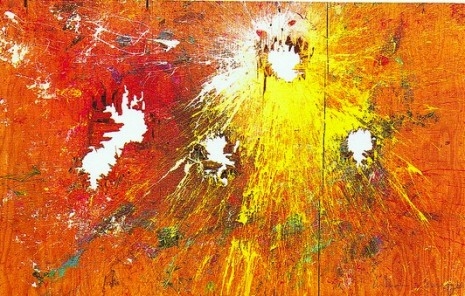
Burroughs explains his shot gun art:
“Once you know where to point, all you have to do is get out of the way and let this thing happen [...] and letting what you really know take over.”
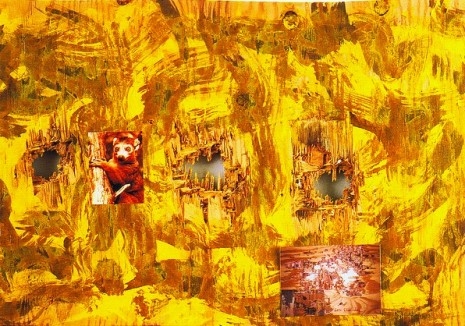
More celebrity artists, after the jump…

I find it difficult to watch Adam Curtis‘s various acclaimed documentaries without thinking: how much has he taken from Bruce Conner?
Indeed without Conner, would Curtis have developed his magpie, collagist-style of documentary making?
I doubt it, but you (and Curtis) may disagree.
The late Bruce Conner is the real talent here - an artist and film-maker whose work devised new ways of working and presciently anticipated techniques which are now ubiquitously found on the web, television and film-making.
Conner was “a heroic oppositional artist, whose career went against the staid and artificially created stasis of the art world”. Which is academic poohbah for saying Conner kept to his own vision: a Beat life, which channeled his energies into art - with a hint of Dada, Surrealism and Duchamp.
Conner was cantankerous and one-of-a-kind. He would wear an American flag pin. When asked why, he said, “I’m not going to let those bastards take it away from me.”
He kicked against fame and celebrity, seeing art as something separate from individual who created it.
“I’ve always been uneasy about being identified with the art I’ve made. Art takes on a power all its own and it’s frightening to have things floating around the world with my name on them that people are free to interpret and use however they choose.”
Born in McPherson, Kansas, Conner attended Witchita University, before receiving his degree in Fine Art from Nebraska University. At university he met and married Jean Sandstedt in 1957. He won a scholarship to art school in Brooklyn, but quickly moved to University of Colorado, where he spent one semester studying art. The couple then moved to San Francisco and became part of the Beat scene. Here Conner began to produce sculptures and ready-mades that critiqued the consumerist society of late 1950’s. His work anticipated Pop Art, but Conner never focussed solely on one discipline, refusing to be pigeon-holed, and quickly moved on to to film-making.
Having been advised to make films by Stan Brakhage, Conner made A MOVIE in 1958, by editing together found footage from newsreels- B-movies, porn reels and short films. This single film changed the whole language of cinema and underground film-making with its collagist technique and editing.
The Conners moved to Mexico (“it was cheap”), where he discovered magic mushrooms and formed a life-long friendship with a still to be turned-on, Timothy Leary. When the money ran out, they returned to San Francisco and the life of film-maker and artist.
In 1961, Conner made COSMIC RAY, a 4-minute film of 2,000 images (A-bombs, Mickey Mouse, nudes, fireworks) to Ray Charles’ song “What I Say”. With a grant from the Ford Foundation, Conner produced a series of films that were “precursors, for better or worse, of the pop video and MTV,” as his obituary reported:
EASTER MORNING RAGA (1966) was designed to be run forward or backward at any speed, or even in a loop to a background of sitar music. Breakaway (1966) showed a dancer, Antonia Christina Basilotta, in rapid rhythmic montage. REPORT (1967) dwells on the assassination of John F Kennedy. The found footage exists of repetitions, jump cuts and broken images of the motorcade, and disintegrates at the crucial moment while we hear a frenzied television commentator saying that “something has happened”. The fatal gun shots are intercut with other shots: TV commercials, clips from James Whale’s Frankenstein and Lewis Milestone’s All Quiet on the Western Front. The film has both a kinetic and emotional effect.
REPORT revealed “Kennedy as a commercial product”, to be sold and re-packaged for arbitrary political purposes.
REPORT “perfectly captures Conner’s anger over the commercialization of Kennedy’s death” while also examining the media’s mythic construction of JFK and Jackie — a hunger for images that “guaranteed that they would be transformed into idols, myths, Gods.”
Conner’s work is almost a visual counterpart to J G Ballard’s writing, using the same cultural references that inspired Ballard’s books - Kennedy, Monroe, the atom bomb. His film CROSSROADS presented the 1952 atomic bomb test at Bikini Atoll in extreme slow motion from twenty-seven different angles.
His editing techniques influenced Dennis Hopper in making Easy Rider, and said:
“much of the editing of Easy Rider came directly from watching Bruce’s films”
The pair became friends and Hopper famously photographed Conner alongside Toni Basil, Teri Garr and Ann Mitchell.
Always moving, always progressing, having “no half way house in which to rest”, Conner became part of the San Francisco Punk scene, after Toni Basil told Conner to go check out the band Devo in 1977. He became so inspired when he saw the band at the Mabuhay Gardens that he started going there four night a week, taking photographs of Punk bands, which eventually led to his job as staff photographer with Search ‘n’ Destroy magazine. It was a career change that came at some personal cost.
“I lost a lot of brain cells at the Mabuhay. What are you gonna do listening to hours of incomprehensible rock’n’roll but drink? I became an alcoholic, and it took me a few years to deal with that.”
Conner continued with his art work and films, even making short films for Devo, David Byrne and Brian Eno. In his later years, Conner returned to the many themes of his early life and work, but still kept himself once removed from greater success and fame. He died in 2008.
Towards the end of his life he withdrew his films from circulation, as he was “disgusted” when he saw badly pixelated films bootlegged and uploaded on YouTube. Conner was prescriptive in how his work should be displayed and screened. All of which is frustrating for those who want to see Conner’s films outside of the gallery, museum or film festival, and especially now, when so much of his originality and vision as a film-maker and artist has been copied by others.
‘Mea Culpa’ - David Byrne and Brian Eno. Directed by Bruce Conner
Previously on Dangerous Minds
‘The Loving Trap’: brilliant Adam Curtis parody
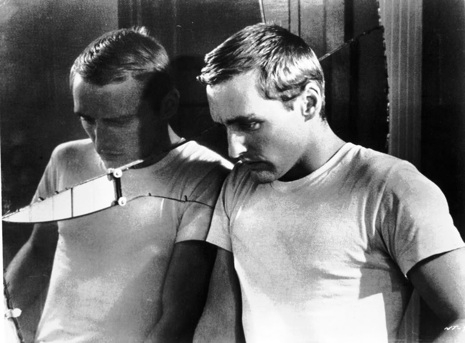
Yet another example of a once super obscure cult film turning up on the Internet, in this case, for free on YouTube’s OpenFlix channel. The late Curtis Harrington’s darkly atmospheric Night Tide (1961) was the first film to star a young Dennis Hopper. The plot revolves around a sailer (Hopper) who has an affair with a mysterious and beautiful woman (Linda Lawson) who portrays a mermaid at a sideshow on the Venice Beach boardwalk. The sailor begins to suspect that his lover is an actual mermaid who commits ritual murders during the full moon.

Occultist/artist Marjorie Cameron, who memorably played the Scarlet Woman in Kenneth Anger’s Inauguration of the Pleasure Dome (Harrington shot Anger’s Puce Moment and appeared in Pleasure Dome as well) has a small but pivotal role as a super intense woman who seems to hold a strange and fearsome power over Lawson’s character. There is also a fantastic jazzy/beatniky soundtrack by David Raskin (who also worked on the soundtrack to Modern Times with Charlie Chaplin and composed the haunting theme to Otto Preminger’s Laura, which became a jazz standard).
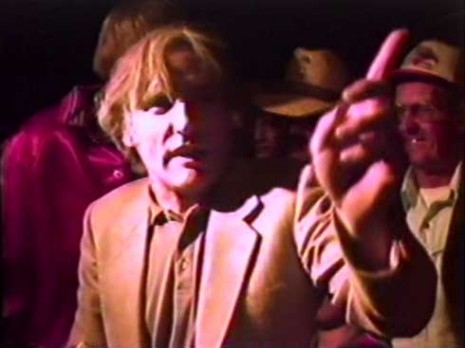
In 1983 Dennis Hopper went to Rice University in Houston, Texas ostensibly to screen his latest film Out Of The Blue. But little known to anyone, other than Hopper and a handful of his buddies, he had another agenda entirely. While he did indeed screen his movie, Hopper had actually come to Houston to blow himself up.
After screening Out Of The Blue, Hopper arranged to have the audience driven by a fleet of school buses to a racetrack on the outskirts of Houston, the Big H Speedway. Hopper and the buses arrived at the speedway just as the races were ending and a voice was announcing over the public address system “stick around folks and watch a famous Hollywood film personality perform the Russian Dynamite Death Chair Act. That’s right, folks, he’ll sit in a chair with six sticks of dynamite and light the fuse.”
Was famous Hollywood personality Dennis Hopper about to go out with a bang?
Hopper apparently learned this stunt when he was a kid after seeing it performed in a traveling roadshow. If you place the dynamite pointing outwards the explosion creates a vacuum in the middle and the person performing the stunt is, if all goes according to plan, unharmed.
After bullshitting for awhile with the crowd and his friends, a drunk and stoned Hopper climbed into the “death chair’ and lit the dynamite.
Rice News correspondent describes the scene:
Dennis Hopper, at one with the shock wave, was thrown headlong in a halo of fire. For a single, timeless instant he looked like Wile E. Coyote, frazzled and splayed by his own petard. Then billowing smoke hid the scene. We all rushed forward, past the police, into the expanding cloud of smoke, excited, apprehensive, and no less expectant than we had been before the explosion. Were we looking for Hopper or pieces we could take home as souvenirs? Later Hopper would say blowing himself up was one of the craziest things he has ever done, and that it was weeks before he could hear again. At the moment, though, none of that mattered. He had been through the thunder, the light, and the heat, and he was still in one piece. And when Dennis Hopper staggered out of that cloud of smoke his eyes were glazed with the thrill of victory and spinout.
In this video footage shot by filmmaker Brian Huberman, we see Hopper in all his intoxicated glory before and after his death defying stunt.
Huberman on the film clip:
The large guy making the sign of the cross is the writer Terry Southern and the jerk threatening to blow up my camera is the German filmmaker, Wim Wenders.
Here’s a piece of history folks.
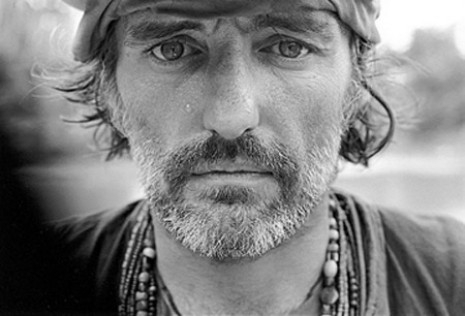
In 2006, the late Dennis Hopper confessed to Charlie Rose on 60 Minutes that he thought his career was a failure. This despite revolutionizing American cinema by directing Easy Rider, and becoming an icon via characters like the lost American photojournalist in Francis Ford Coppola’s Apocalypse Now and the sinister Frank Booth in David Lynch’s Blue Velvet. He likely wasn’t otherwise convinced by the star he received on the Hollywood Walk of Fame a couple of months before he died.
These clips from Lawrence Schiller-directed 1971 documentary The American Dreamer find the Dodge City, KS-born Hopper in a reflective and quietly desperate place. Shot while he completed post-production on The Last Movie—Hopper’s convoluted, Peruvian-filmed follow-up to Easy Rider—Dreamer follows the scraggly and bearded director as he wanders, parties and babbles around his Taos, NM ranch.
You’d think that triumph of Easy Rider would somewhat make up for Hopper’s emotionally damaged childhood, career troubles, two divorces, and the trauma of his good friend James Dean’s death. But Hopper here is deep inside his alcoholism, musing on his alienation, and treating the filming as a sort of therapy. As you’ll find in the second clip below, part of that therapy involves what he termed a “sensitivity encounter” with about a dozen variously undressed groupies who the mad director harangues with some group-psych babble before disrobing himself. Hopper would eventually hit bottom, wandering literally naked in a South American jungle, before being hospitalized, rehabilitated, and eventually redeemed in the later phase of an enviable “failure” of a career.
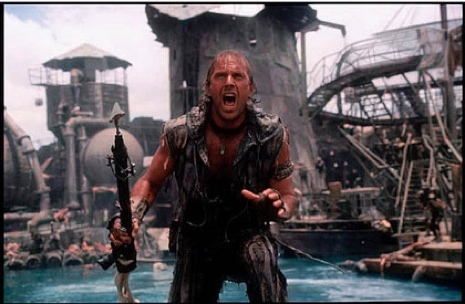
I usually shoehorn my more dystopian views of the future into one of two possible models: The “Ballardian,” the one of malls, high rises, and airport concourses, and the “Waterworld-ian,” the one of pet sharks, rising sea levels, and one-eyed Dennis Hoppers.
Sharks aside, that last model might have just become a bit more endurable now that scientists have unlocked a way to engineer a rice plant that can “elongate rapidly in response to being submerged.” These plants, as Nature reports, “could also boost the production of rice in Asia and Africa, where up to 40% of crops are subject to flash floods or deep water.” To watch these amazing plants “snorkel” up and possibly save us all, follow this link to some unembeddable BBC footage.